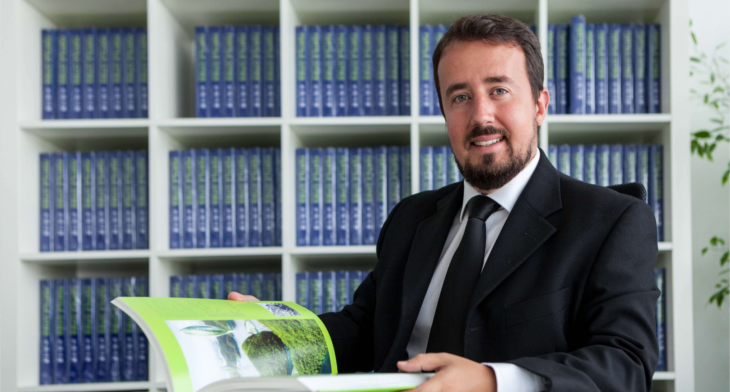His stature in the world of architecture is renowned! Each time, Vincent Callebaut comes up with new projects, the world wonders in awe at his spectacular design creations. How he does it? What goes in his minds during the thought process? The archibiotect has created a niche for self.
The Botanic Center Bloom Project in Brussels is one of his latest creations. Johnny D talks to Vincent Callebaut to unravel the technicalities of the project.
Aerial View
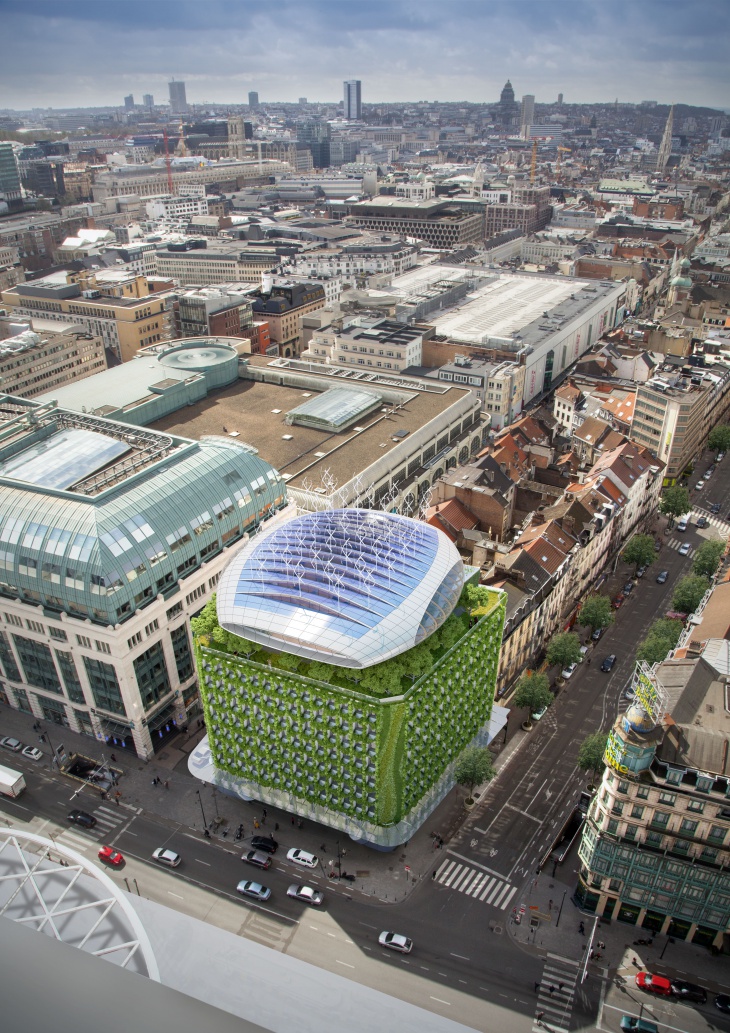
A Street View from Botanic Boulevard

Johnny D: Please explain about ‘The Botanic Center Bloom’, which is touted as an Ecological, ‘Landmark’ Urban Renewal and ‘Nation Branding’ project for Belgium.
Vincent Callebaut: The architectural, technical, functional and landscaping choices reflect the integration of an environmental approach into our project.
A Street View from Place Rogier
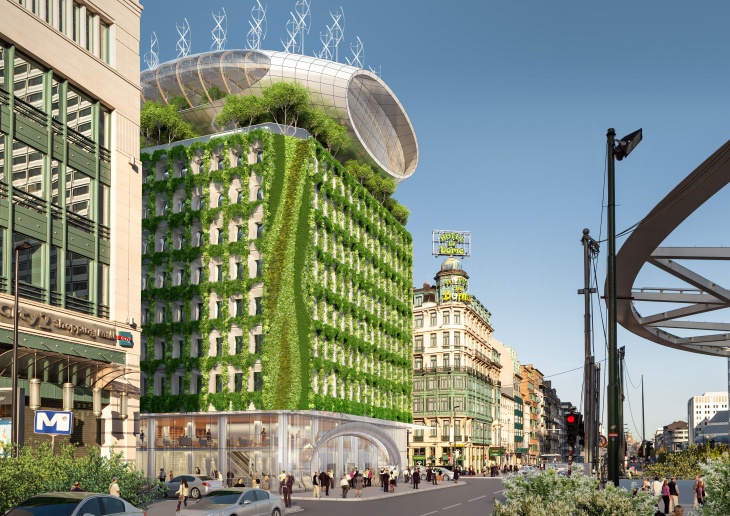
The bold choices enabled us to design an ‘out-of-the-box’ architecture, which will impact Brussels environmentally, definitely projecting the Botanic Center into the 21st Century.Metamorphosis means transforming the caterpillar into a butterfly.
A Street View from Sheraton Hotel

JD: Please enlighten esteemed readers of Design Trends more about Metamorphosis, on which the project’s design is based.
VC: Metamorphosis means the transformation of the caterpillar into a butterfly. Metamorphosis does not mean eradicating the past, but rather integrating the best of the past into our future. Metamorphosis means privilege in writing a story over another.
A Street View from Adolphe Max Boulevard
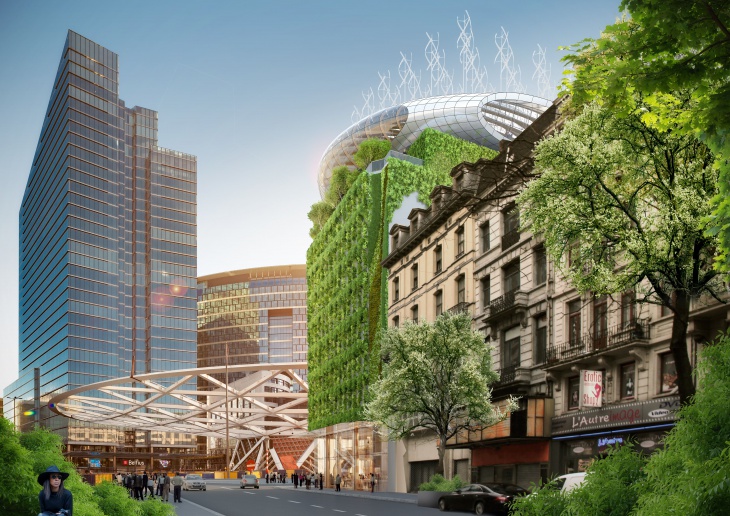
Metamorphosis means selecting which components of the past will form the foundations of a future, still to be imagined. The role of architects extends beyond mere conservation or restoration. It involves advocating for a hybrid history and making bold choices, not for self but for others.
Aerial View towards Old City Center
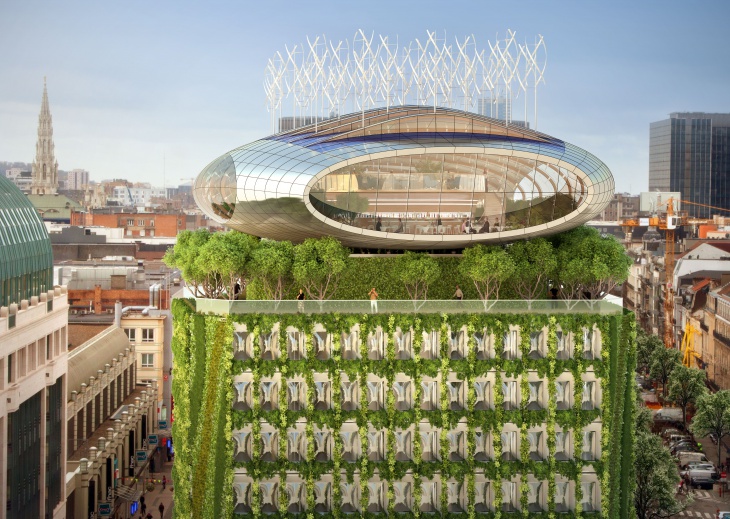
It also means, being determined to act as forward thinkers and bring the Botanic Center into the 21st Century, in terms of uses, technological progress and innovative sustainable building principles. Today’s architecture is capable of implementing ‘energy solidarity’ between a piece of architectural heritage – modern in this case and a contemporary project. The latter provides the necessary energy to the former by integrating renewable energies, thus limiting carbon emissions, as recommended by the COP 21.
Satellite View
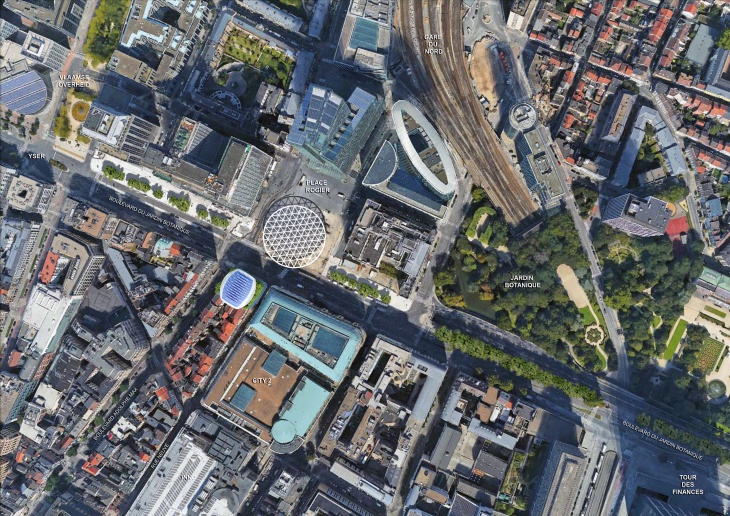
JD: How did you design the concept?
VC: Built in 1977, the Botanic Center looks vertically unfinished today. With its 274 identical ornamental concrete modules typical of the modern period, the façade does not reflect the birth name of the building, which is related to the nearby Jardin Botanique.
Main Entrance View
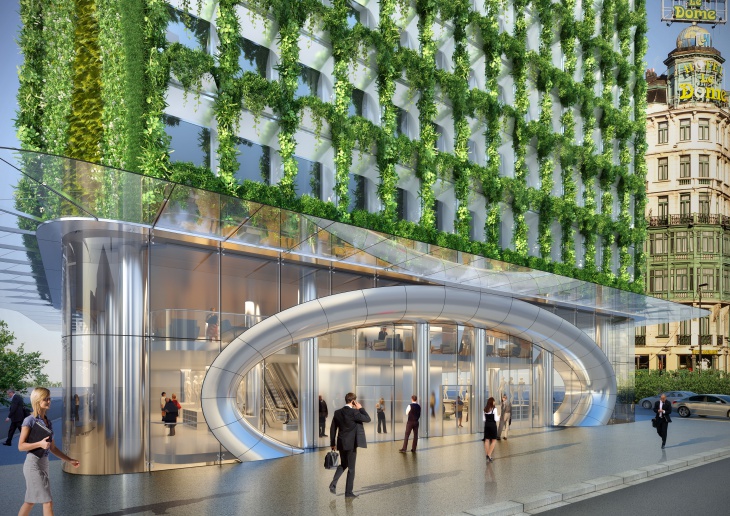
The proposed concept is to ‘bloom’ the existing building, in the botanical, flowering sense of the word. Planter beds and a web of cables act as substrate, dressing the mineral façade with a vegetal envelope that regroups the entire range of the flora endemic to the Brussels area.
Secondary Entrance View
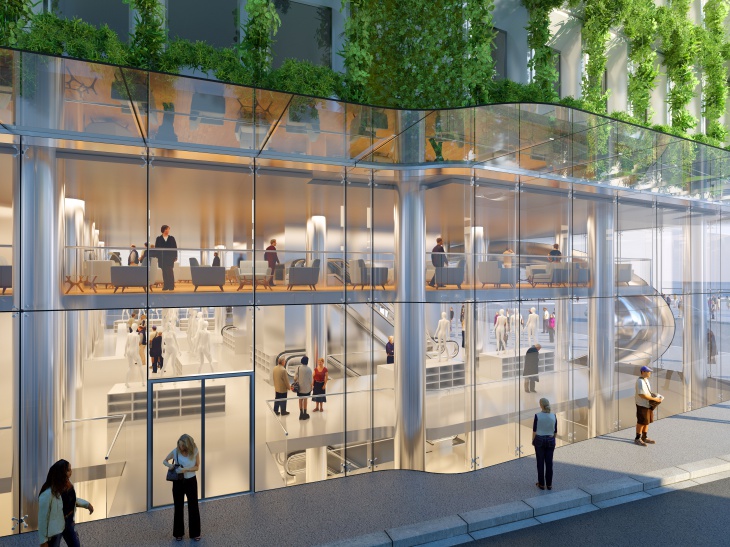
At the top of the building, a ‘Chrysalis’ made of wood and steel deploys its curves to offer panoramic views to tenants and visitors, while echoing the large, Xaveer De Geyter-designed circular canopy, which now covers the Place Rogier.
Wind Turbines Farm

JD: Enlighten our readers about its Urban Integration location.
VC: Located strategically at the entrance of the Rue Neuve, and across from the City 2 shopping mall (the largest in Belgium) and the Belfius tower, the Botanic Center benefits from an exceptional urban location, worthy of celebration.
Given the project’s location in the heart of the highly mineral Boulevard Botanique, recommending an ecological landmark and vegetal architecture was an obvious choice – using photosynthesis to absorb the carbon particles contained in the urban smog, while integrating advanced renewable energies to address the project’s own needs.
Summer Façade
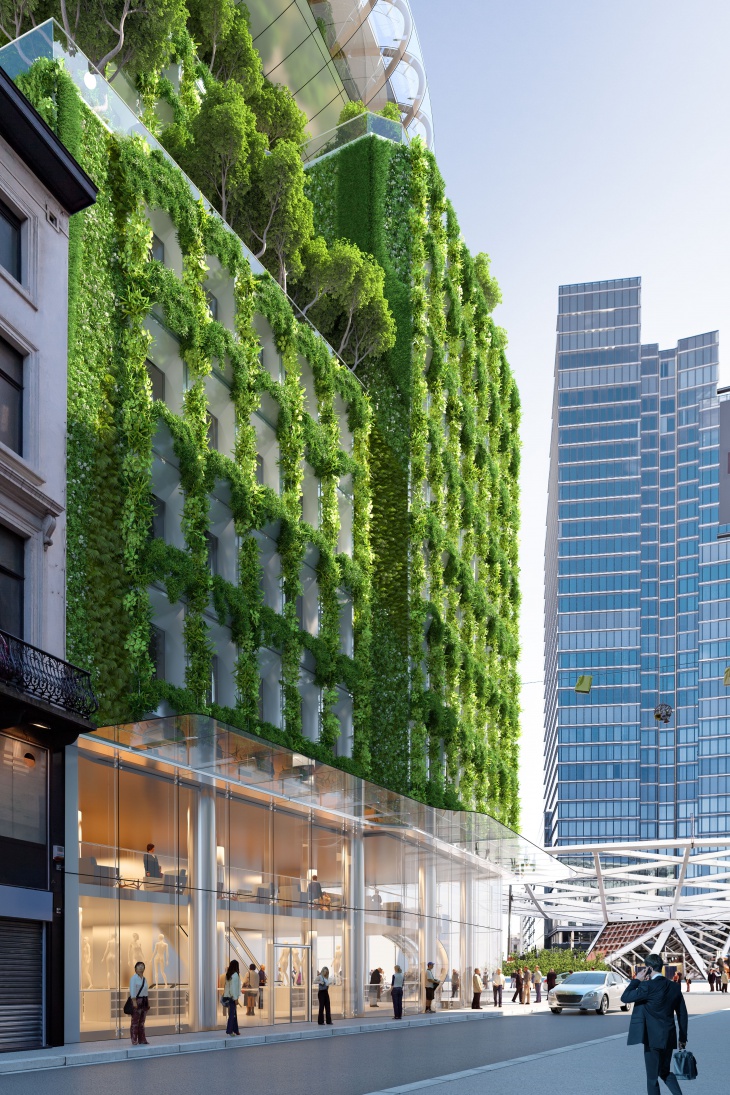
The Chrysalis is carefully placed on the roof, aligning with the scale of the City 2 shopping mall. Its proactive architecture embraces its era. On the ground floor, a contemporary façade and structural glass canopy reinforce the appeal of the public space, by enhancing the indoor-outdoor interaction towards the Place Rogier forming a homogenous, dynamic whole.
Autumn Façade
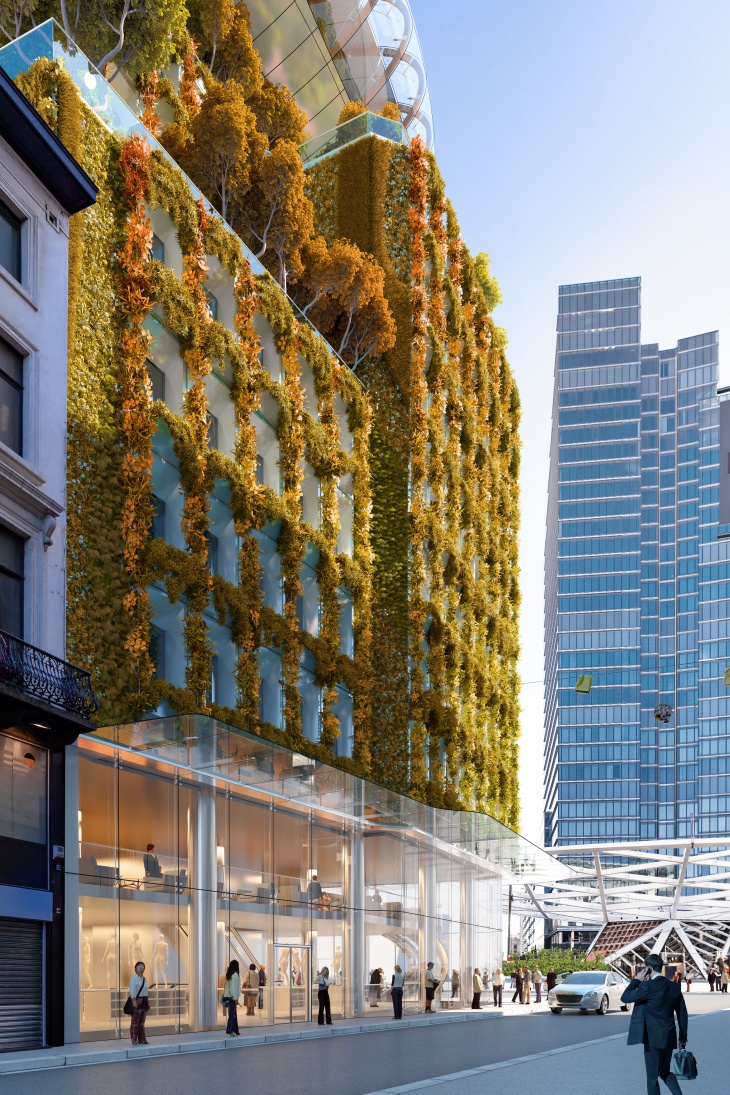
Johnny D: Please explain the design of the carbon-absorbing façades in the project?
VC: Our ambitions are as follows: to imagine a vegetal envelope on the three façades of the Botanic Center; to bring bio-diversity back into the heart of the City; and with the help of botanists, to select plants that will add colours to the building, according to seasons.
Winter Façade

The 274 planter beds are directly integrated into the 274 existing modules of the façades. They enable the growth of overhanging and climbing plants, along the web of cables woven into the existing vertical seals of the façades. A drip system irrigates the beds. Maintenance is performed twice a year, at the beginning of spring and the end of autumn.
Spring Façade
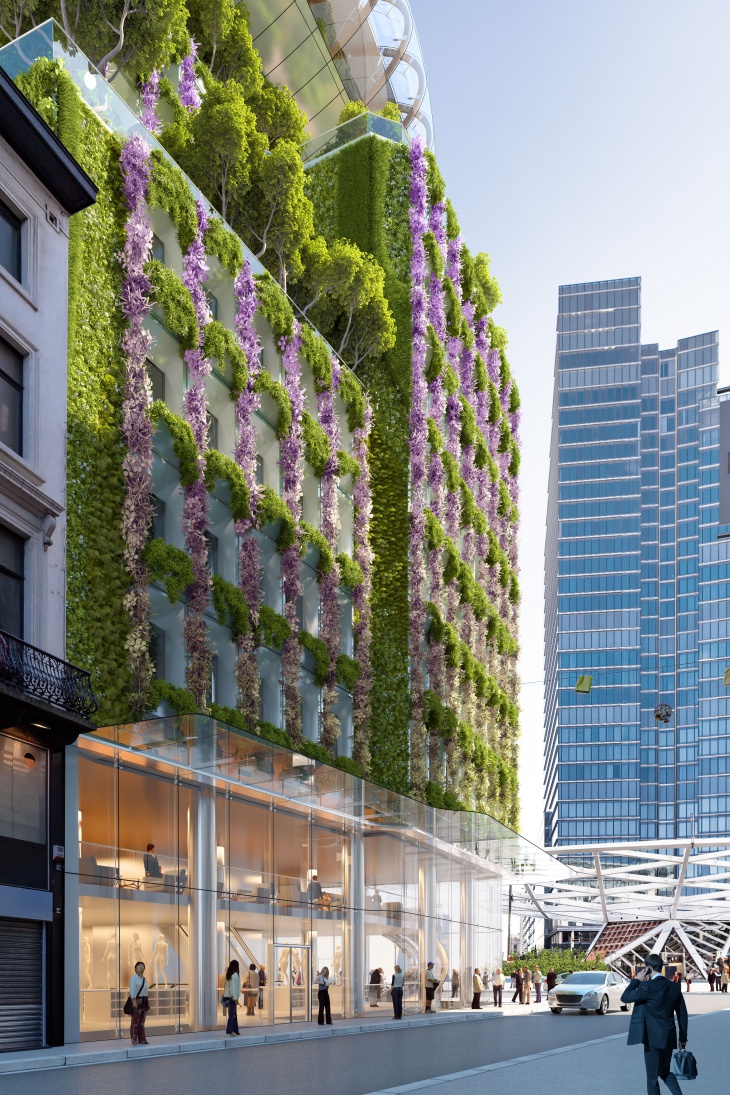
The photosynthesis of the 10,000 plants covering the façades and green roofs enable the capture of close to 50 tons of carbon dioxide in the Brussels atmosphere each year. In addition, the vegetal façades increase the building’s thermal inertia, while the woodwork and window panes are replaced by curved double glazing with high performance, airtight tilt and turn frames.
The Proposed Bar Area
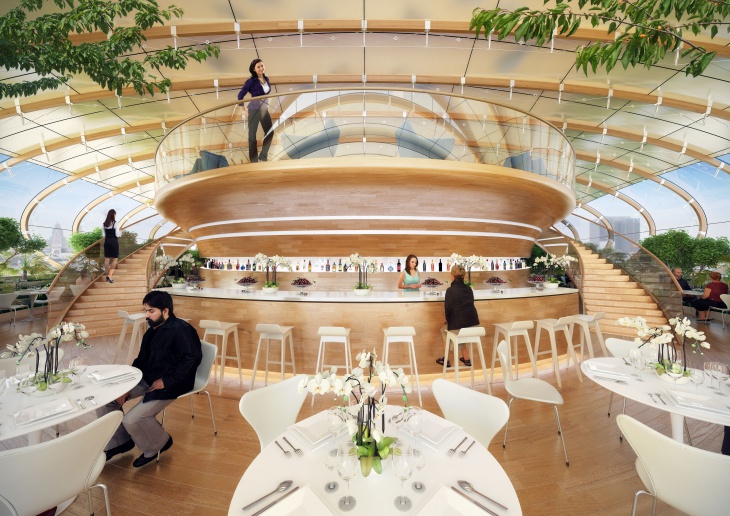
Surrounded in Nature
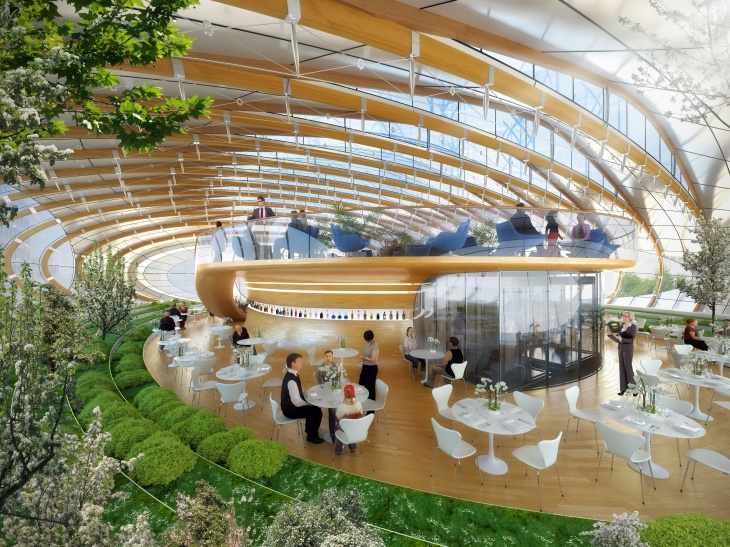
JD: Your innovative design of the photovoltaic roof and solar farm is truly magnifique work of sustainability. Please enlighten our readers with its technicalities.
VC: The high thermal energy shell of the titanium covered Chrysalis embraces the curves imposed by the urban setbacks, along the Rue Neuve and Boulevard Adolphe Max. Its underside rests on the existing equipment rooms. Its top side is made of 12 gills that extend southwards to better capture sunlight, thereby increasing the energy efficiency of the silicon panels covering them. The 600 m² solar shield helps generate more than 96,000 kWh/year (160 kWh/m²/year = c. 15 kWh per square foot per year).
Spectacular View from the Interior
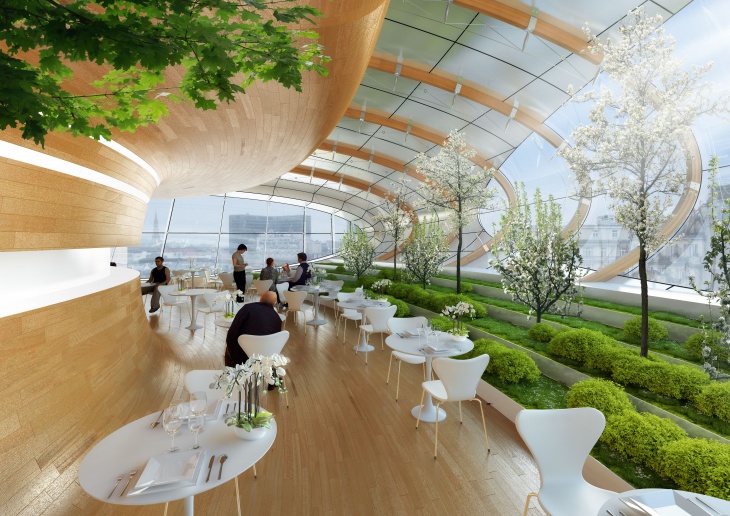
This energy production is supplemented by a 42-VAWT farm (vertical axis wind turbines). The annual output of those wind turbines is estimated at 770 kWh x 42 turbines = 32,340 kWh/year.
Magnifique Design Sensibilities
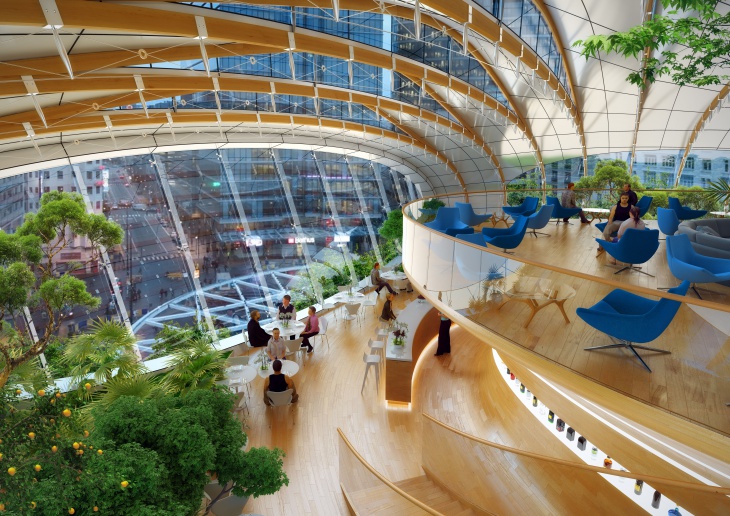
The total annual output of renewable energies (solar and wind) is 128,340 kWh/year, which allows to either cover part of the existing building’s needs, or to ensure the self-sufficiency of the new dedicated spaces inside the Chrysalis.
Auditorium Seating Arrangements
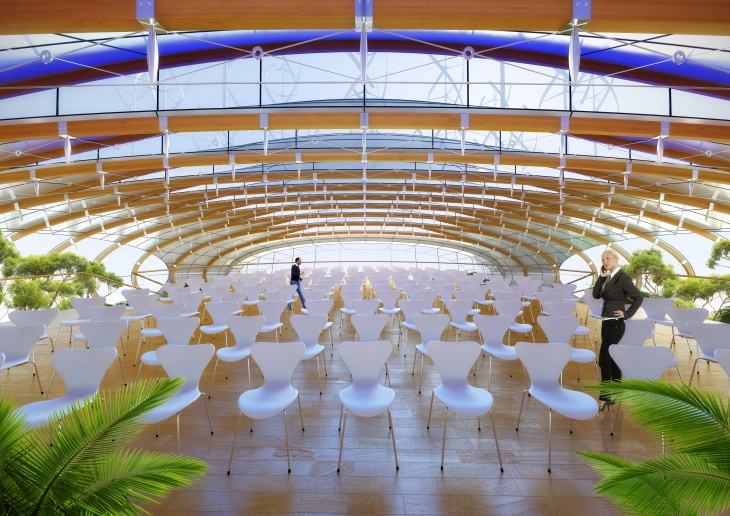
JD: Describe the structural and functional designs of the project.
VC: The heightening of the Botanic Center requires a light, floating structure. The Chrysalis is sub-divided into 15 arches made of glulam (glued laminated timber), pre-tensioned by a web of steel cables that limit its spatial and visual clutter. These 15 arches rest on a deck (underside of the curve) levitating above the equipment floor. The deck transfers the loads to the building’s carrier cores and existing columns.
The Lounge Area
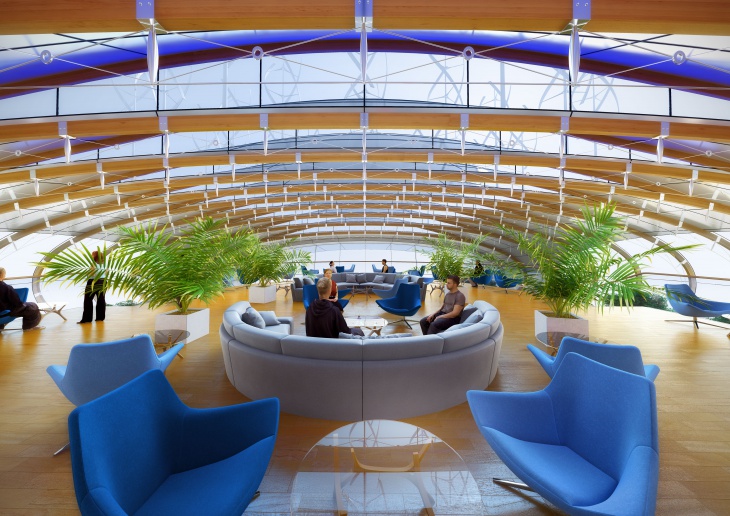
The two façade tympana — to the north towards the Belfius tower and to the south towards the historic city center — are made of two inclined, structural glass curtain walls. The two east and west tympana are made of curved glass echoing the nearby roof curves imposed by urban setbacks. The vertical façades of the 12 north-oriented gills bring natural ventilation to the new space.
Ground Floor Model
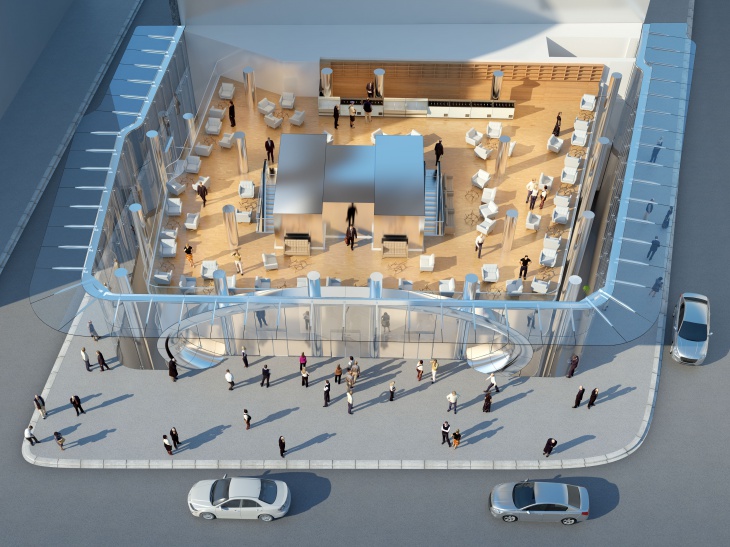
Roof Design
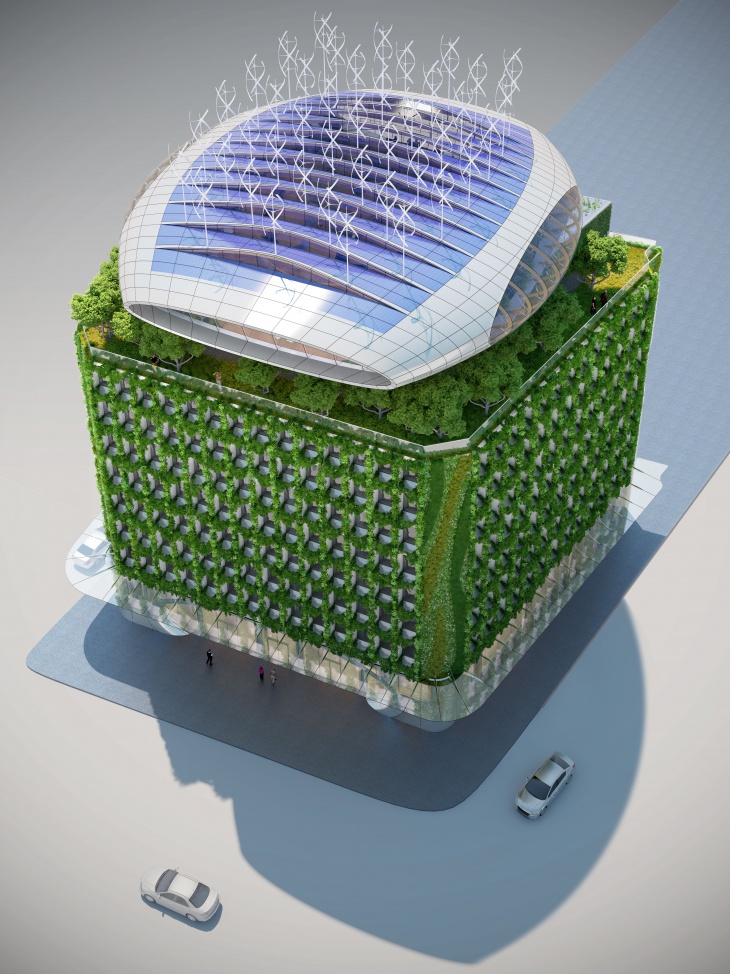
From a functional viewpoint, the Chrysalis is linked to the existing vertical circulations, with dedicated accesses located in the base of the mezzanine. Both the mezzanine and the deck have raised floors, allowing the deployment of equipment, such as plumbing, HVAC and NICT. These raised floors provide a spatial and temporal flexibility in terms of space allocation. They can be reconfigured endlessly, to accommodate the needs of the future tenants and visitors.
Roof Axonometric View – I
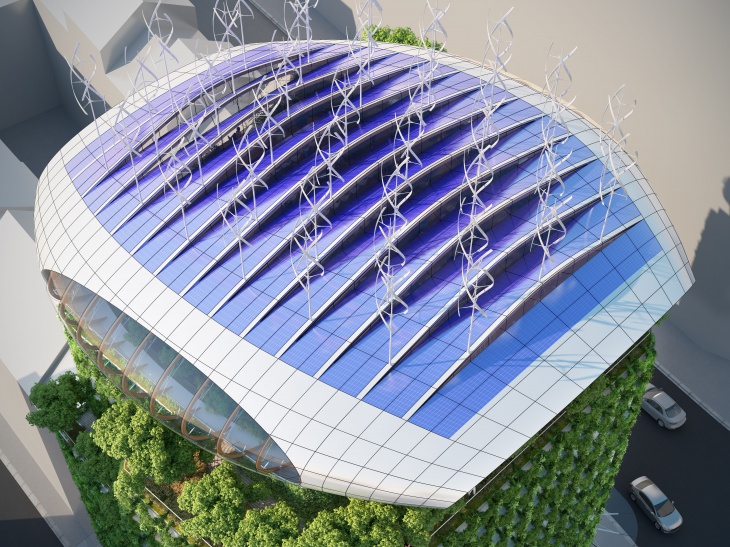
Roof Axonometric View – II
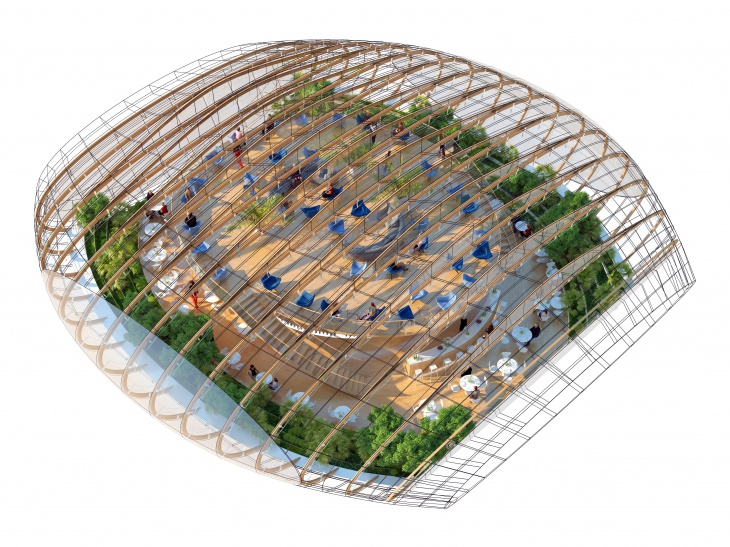
JD: Please state the idea behind designing various flexible plan types.
VC: The Chrysalis represents a great real estate opportunity, as it enhances the existing architectural heritage, while bringing in renewable energies. With regard to the programming, it will be up to the contractor to complete the necessary market studies to enhance the value of a property, which will become a new symbol in Belgium’s capital city – that of sustainable and environmentally-responsible construction.
Roof Axonometric View – III
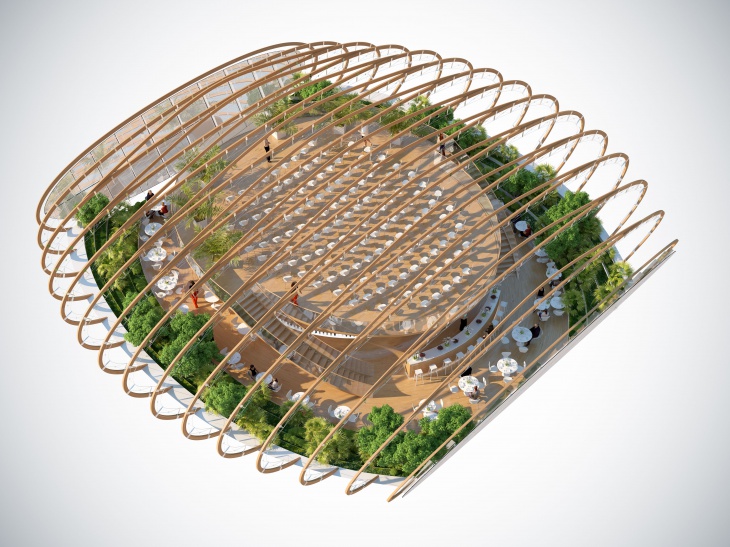
A View from the Top
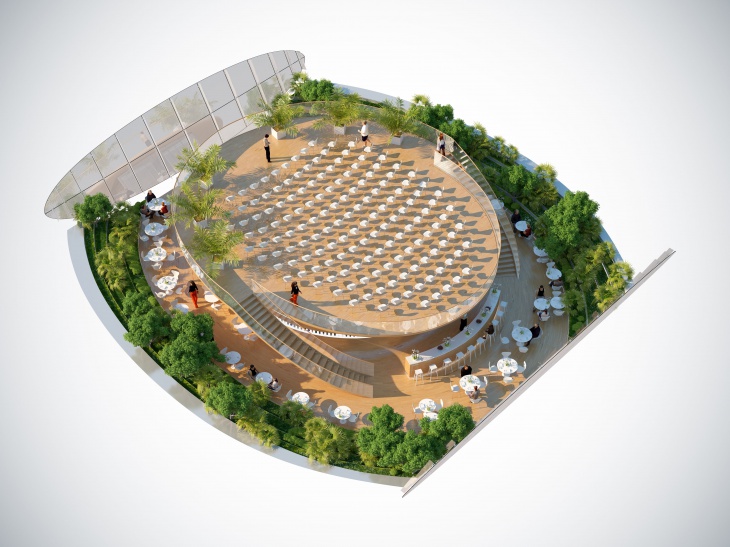
The heightened structure could also become a location, dedicated to events and culture, to training or co-working, or to urban agriculture with Permaculture gardens. The architecture of the street-facing façades at ground and mezzanine levels is thought to match the architecture of the heightened rooftop level.
Roof Structure Design
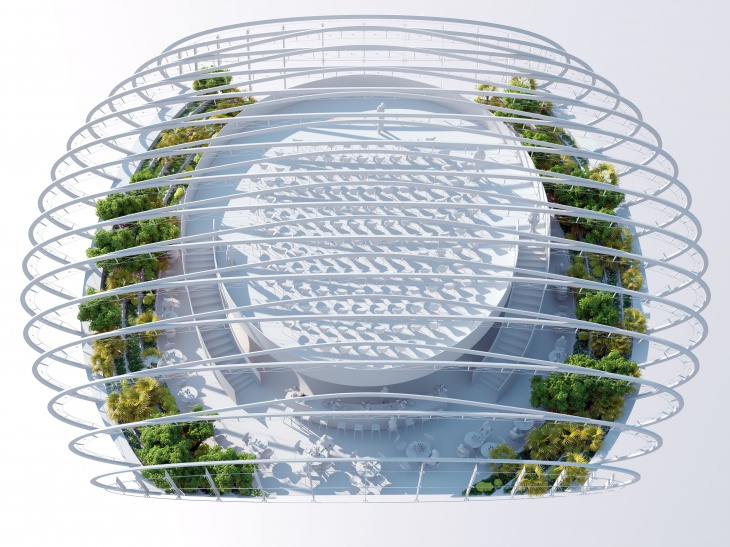
A Tempting View
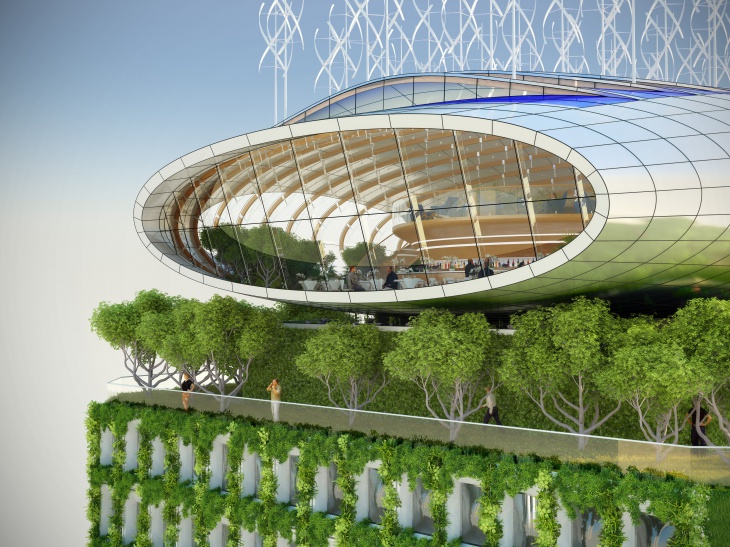
The challenge is to bring as much natural ventilation and daylight into the basement spaces. Given the spatial clutter of the vertical circulation cores, the design selected dissociates the slab nosing of the ground and first basement levels from the perimeter of the glass façades, with dry moats that help expand the Retail Store, thus providing new marketable spaces.
The Model
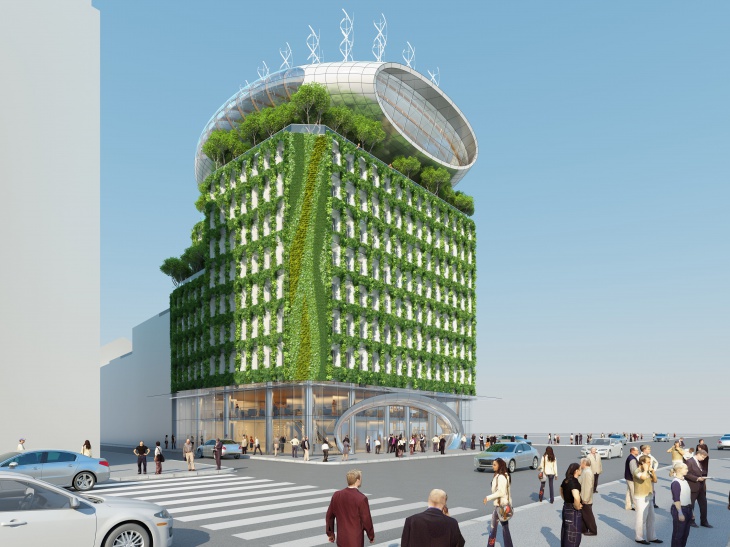
Magnifique View
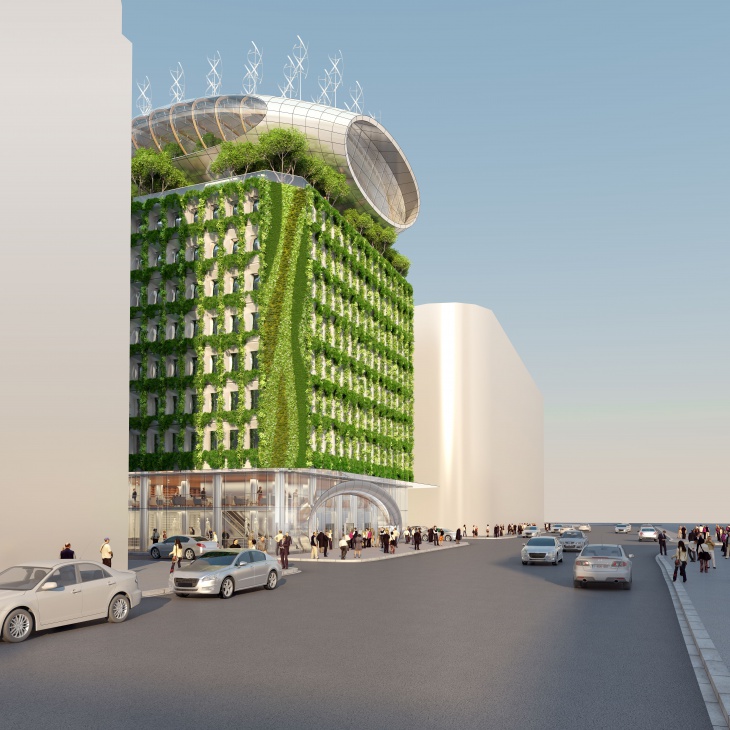
Along the Boulevard Adolphe Max, an elliptical arch similar to that of the Chrysalis clearly marks the main entrance to the Retail Store, while two escalator shafts attached to the central core provide access to its four levels. The more discreet side entrances are kept.
Spectacular Structure
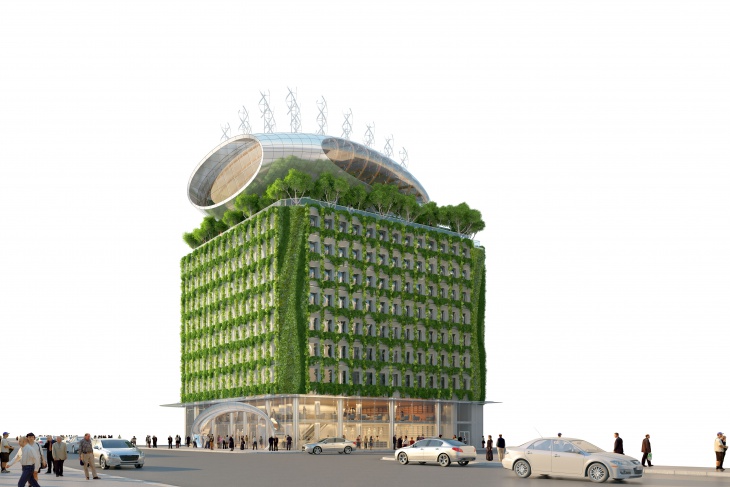
XXX
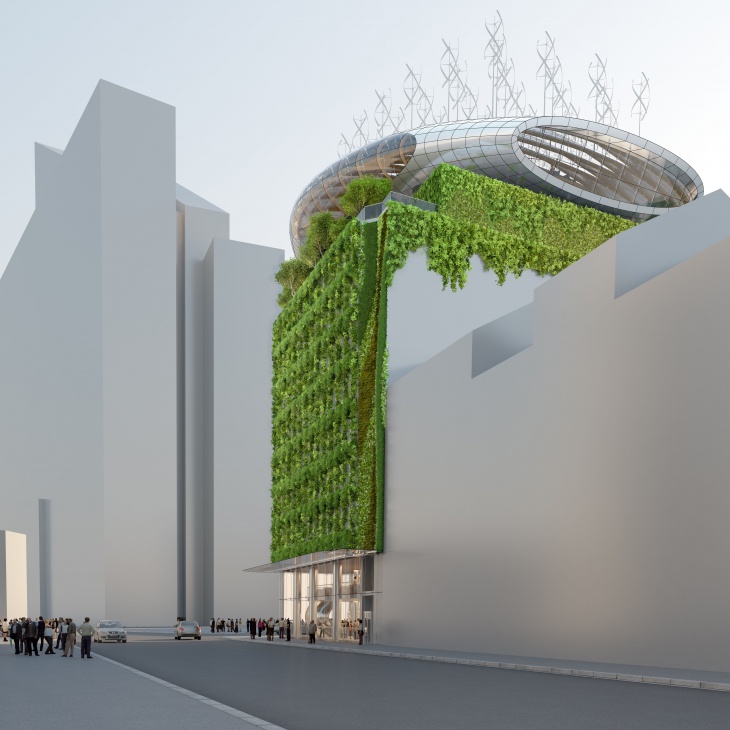
JD: Tell us more about the interior spaces.
VC: We consider it a duty to design a low carbon impact architecture based on a ‘cradle-to-cradle’ circular economy model, which will take all the inherent carbon emissions into account, while addressing the energy balance of the building’s life, from its delivery to its entire ‘recyclability’.
A View Hard-to-Resist
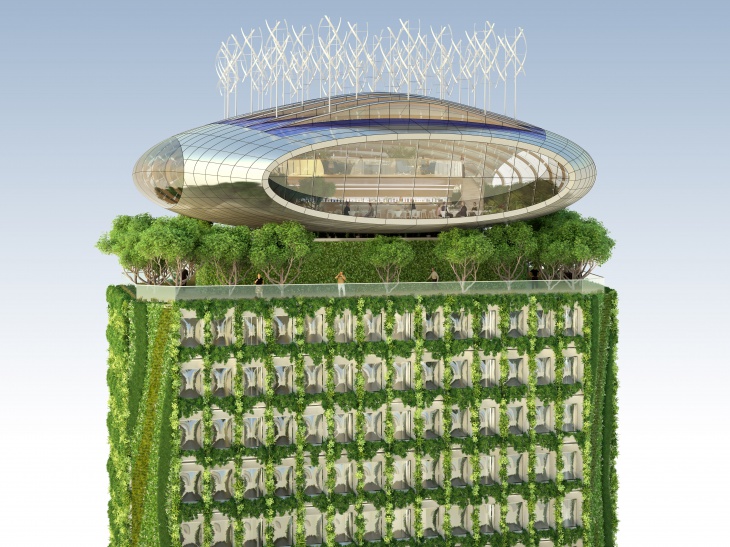
Roof Design
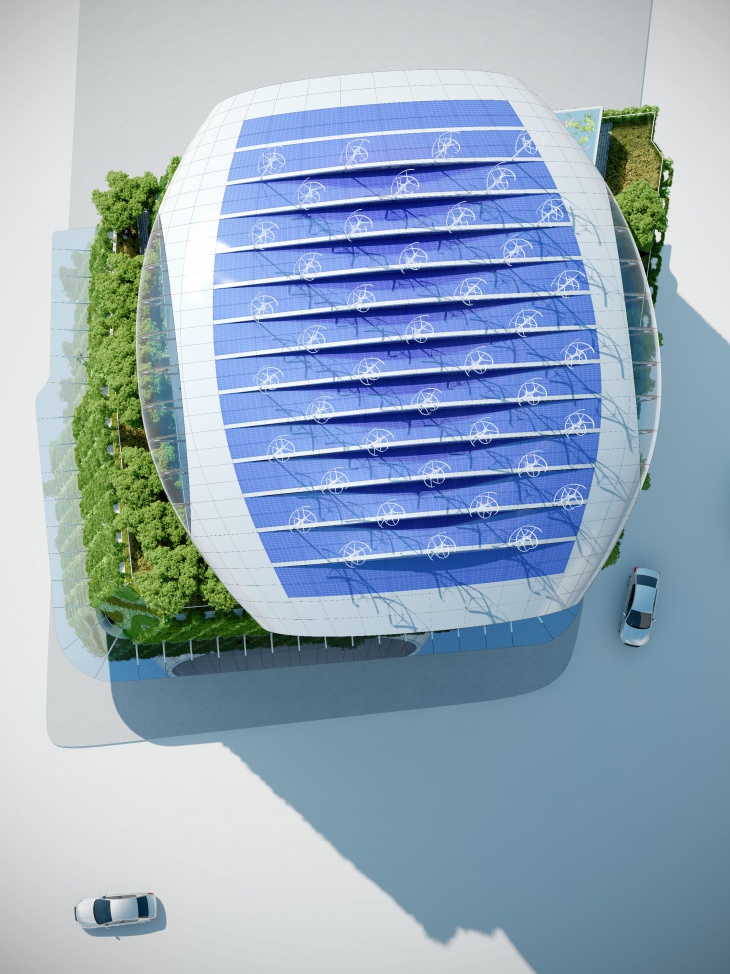
Designing architecture to optimize the quality of life and use is another duty, because the sustainability of a building is not solely energy-based. It is also based on spatial flexibility, on the use of bio-sourced materials that provide both quality and service in terms of comfort, performance and atmosphere, and on the reduction of nuisances and the generation of positive impacts. Such services are provided to all stakeholders (clients or future users), and at all scales (building, square, neighborhood, city, territory).
Green Façade Details – I

Green Façade Details – II

The purpose of the technical, structural and equipment “innervation” is to enable users to endlessly reconfigure their interiors. As discussed, technical components disappear within raised floors and double-partition walls, thus freeing space. With regard to the interior design and furniture layout, we also pay particular attention to the use of natural materials that are recycled and/or recyclable, warm and pleasant.
Green Façade Details – III
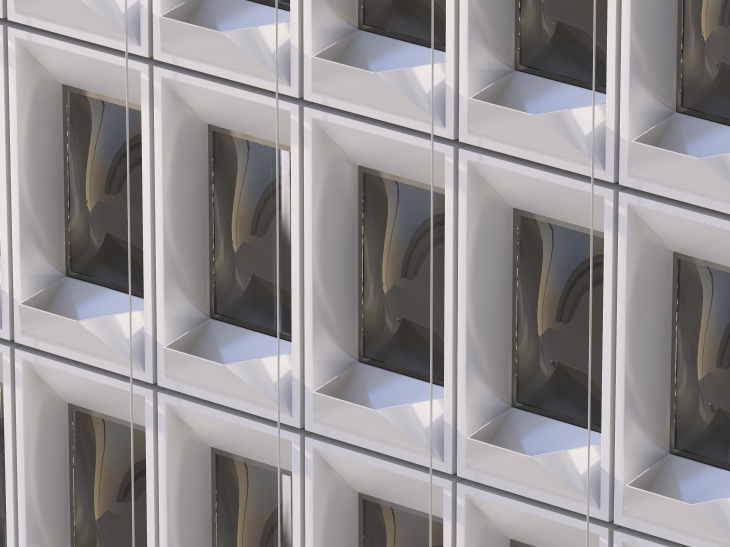
Green Façade Details – IV

JD: Please mention 5 recent awards won by you.
VC: They are as follows:
- 2015, the Innovation Award Finalist on Innovative Design by the CTBUH – Council on Tall Buildings and Urban Habitat, Chicago
- 2015, Honorary Mention Winner for the project Wooden Orchids by the UIA – International Union of Architects, Paris, France
- 2014, Winner of the International Architecture Award 2014 with the project “Tao-Zhu Garden”, Chicago Athenaeum, New York
- 2014, Winner of the Highly Commented Award 2014 with the project “Tao-Zhu Garden”, Future Residential Project, World Architectural Festival, Singapore
- 2014, German Design Awards, Winner 2014 for the project “Asian Cairns”, Architectural German Council, Berlin
Related Posts
An Interview with Renowned Turkish Architect Melkan Gürsel ...
An Interview with British Architect Designer Nick Leith-Smith ...
An Interview with Architect-Designer Jo Nagasaka ...
An Interview with Renowned Spanish Architect Dr. Luis de Garrido
Award Winning Architect Jorge Canete Architecture Design ...
An Interview with Architect – Designer Lyndon Neri ...
An Interview with Architect Simon Rawlings ...
An Interview with Multiple AIA Award-Winning American Architect ...
Interview with Architect James Cutler Architecture ...
An Interview with Lina Ghotmeh - Premium PSD ...
An Interview with Multiple Award Winning Architect Architecture ...
An Interview with Architect Masayoshi Nakanishi ...
An Interview with Multiple Award-Winning German Architect UWE ...
An Interview with Andrew Todd - Premium PSD ...
Interview with World Renowned Architect Luis De Garrido Design ...
